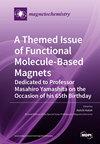碱离子掺杂对La0.9A0.1Mn0.9Cr0.1O3(A:Li,K,Na)粉末和陶瓷磁性能的控制
IF 2.5
4区 化学
Q2 CHEMISTRY, INORGANIC & NUCLEAR
引用次数: 0
摘要
采用燃烧法制备了La0.9A0.1Mn0.9Cr0.1O3 (A: Li, K, Na)纳米晶粉体。采用高压低温烧结技术制备陶瓷。采用x射线衍射(XRD)、拉曼光谱(Raman)、能量色散x射线光谱(EDS)和扫描电镜(SEM)对样品的结构、元素组成和形貌进行了研究。用磁强计研究了阳离子的磁性能,用x射线光电子能谱(XPS)研究了碱离子掺杂后阳离子的价态变化。研究了烧结压力对掺杂不同碱离子和铬的锰酸盐结构和磁性能的影响。研究了烧结压力和掺杂类型对磁化性能的影响。碱离子的化学掺杂和外部压力的作用使化合物的磁性能发生了明显的变化。研究发现,通过适当的掺杂元素,可以对锰酸盐的磁性能进行可预测的修饰。本文章由计算机程序翻译,如有差异,请以英文原文为准。
Controlling the Magnetic Properties of La0.9A0.1Mn0.9Cr0.1O3 (A: Li, K, Na) Powders and Ceramics by Alkali Ions Doping
Nanocrystalline La0.9A0.1Mn0.9Cr0.1O3 (A: Li, K, Na) powders have been synthesized by combustion method. The powders were used to prepare ceramics by high-pressure low-temperature sintering technique. For all samples the structure, elemental composition and morphology were studied using X-ray diffraction (XRD), Raman spectroscopy, Energy-Dispersive X-ray Spectroscopy (EDS) and Scanning electron microscopy (SEM). Magnetic properties were studied using magnetometry methods and the valency changes of the cations after alkali ions doping were studied using X-ray photoelectron spectroscopy (XPS). The influence of the sintering pressure on the structural and magnetic properties of the manganites doped with different alkali ions and chromium was also investigated. Magnetization properties were studied as a function of sintering pressure and type of the dopant. Chemical doping with alkali ions as well as external pressure significantly changed the magnetic properties of the compounds. It was found that the magnetic properties of the manganites could be predictably modified through the use of a suitable dopant element.
求助全文
通过发布文献求助,成功后即可免费获取论文全文。
去求助
来源期刊

Magnetochemistry
Chemistry-Chemistry (miscellaneous)
CiteScore
3.90
自引率
11.10%
发文量
145
审稿时长
11 weeks
期刊介绍:
Magnetochemistry (ISSN 2312-7481) is a unique international, scientific open access journal on molecular magnetism, the relationship between chemical structure and magnetism and magnetic materials. Magnetochemistry publishes research articles, short communications and reviews. Our aim is to encourage scientists to publish their experimental and theoretical results in as much detail as possible. Therefore, there is no restriction on the length of the papers. The full experimental details must be provided so that the results can be reproduced.
 求助内容:
求助内容: 应助结果提醒方式:
应助结果提醒方式:


